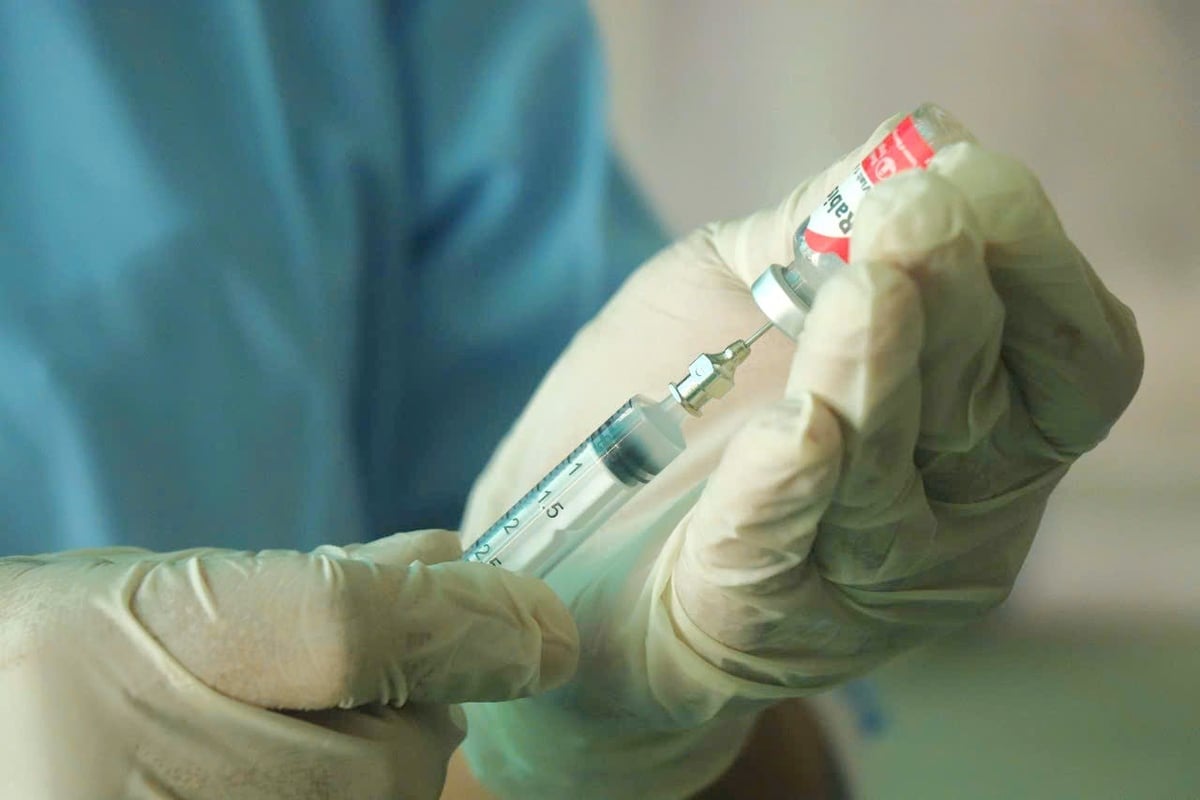November 11, 2025 | 22:55 GMT +7
November 11, 2025 | 22:55 GMT +7
Hotline: 0913.378.918
November 11, 2025 | 22:55 GMT +7
Hotline: 0913.378.918
Ensuring food and nutrition security for the population
Nearly eight decades after President Ho Chi Minh signed the decrees establishing the Animal Health Department (1945) and the Livestock Production Department (1950), Viet Nam’s livestock production and animal health sector has undergone a clear transformation. Over 80 years of development, the sector has not only played a pivotal role in ensuring Viet Nam’s food and nutrition security but has also contributed significantly to economic and social development, particularly in rural areas.

Livestock is the agricultural field with the most stable and high value-added growth rate. Photo: Minh Anh.
Major product output has grown strongly: meat more than doubled from 4.0 to 8.28 million tons, egg output tripled from nearly 6.4 billion to 20.2 billion, and fresh milk quadrupled from 0.3 to 1.2 million tons. Some products now hold international market value and branding, such as honey, suckling pigs, bird’s nests, salted duck eggs, processed chicken, and dairy.
Many subfields within livestock and veterinary services now hold high standings regionally and globally. Viet Nam ranks 5th worldwide in pig herd size and 6th in pork output; 2nd worldwide in waterfowl population (over 100 million birds); 3rd in ASEAN in fresh milk production; and its industrial animal feed production (21.5 million tons) ranks 1st in Southeast Asia and 12th globally.

The livestock production and animal health industry has provided livelihoods for approximately 6 million of Viet Nam’s 8 million farming households, contributing to rural transformation. Photo: Minh Anh.
From a time when Viet Nam lacked food and relied on imports, the livestock production sector has been consistently developing to ensure a domestic supply of meat, eggs, and milk for over 100 million people and more than 10 million visitors annually, while also contributing to exports. The sector currently accounts for approximately 25-27% of agricultural GDP, contributing directly to national food and nutrition security.
Over the past 15 years, more than 200 major scientific research projects in livestock production and animal health have been completed, and 120 technical advances have been officially recognized. Viet Nam has mastered the selection and breeding of pigs and poultry and successfully developed multiple vaccines for animal diseases.
Between 2013 and 2024, 47 new livestock breeds were recognized. Currently, 59 high-yield, high-quality breeds are used for production, including 16 new domestic breeds, 12 imported breeds, and 31 hybrid lines. From 2009 to 2024, 87 technical advances in breeding were recognized, many notably in poultry and waterfowl.
The animal feed industry, though starting behind regional and global peers, has grown rapidly. After more than 30 years, Viet Nam now ranks among the top producers in ASEAN and among the top 10 globally in industrial animal feed output. The country has 267 industrial feed manufacturing plants producing an average of 21 million tons annually. Efficient use of agricultural by-products, aquaculture waste, and insect-based protein sources has contributed to stronger sustainability and environmental benefits. However, dependence on imported feed ingredients remains a major challenge.

Advancements in vaccine and veterinary pharmaceutical research and production stand out as major accomplishments. Photo: Minh Anh.
To ensure the safety of livestock and poultry, Viet Nam has resolutely and synchronously implemented prevention and control solutions in recent times, notably the complete elimination of classical swine fever epidemics in the late 1970s.
Specialized units have been well controlling dangerous diseases transmitted between animals and humans, especially Anthrax (previously killed thousands of livestock and dozens of people each year); avian influenza A/H5N1, A/H5N6 (killed 64 people and forced the destruction of over 65 million poultry of all kinds), influenza A/H7N9; rabies in animals (killing hundreds of people each year). At the same time, the sector has effectively contained the spread of several dangerous epidemics, including blue ear disease, classical swine fever, Newcastle disease, and Gumboro.
Research and production of veterinary vaccines and medicines have been a standout achievement. Viet Nam now produces more than 70% of the vaccines and veterinary drugs used domestically and exports them to over 45 countries each year, generating hundreds of millions of USD. Vietnam was the first country in the world to research and successfully produce a vaccine against African swine fever (in 2020).
Translated by Samuel Pham

(VAN) An Giang integrates IPHM to promote green rice farming, cut costs, and enhance grain quality and brand value.

(VAN) Marine resources beneath the sea are being gradually identified and studied, forming the foundation for sustainable exploitation and the development of a blue economy.

(VAN) Residents in the Lang Sen buffer zone can improve their income and preserve wetland biodiversity thanks to the nature-based livelihood models.

(VAN) The Department of Hydraulic Works Management and Construction aims to build a modern, smart, and sustainable water management sector that ensures water security and promotes rural development in Viet Nam.

(VAN) Dong Thap province stands before major opportunities in restructuring its economy, particularly in agriculture and environmental management, which have long been local strengths.

(VAN) The degradation of Cat Ba’s coral reefs is not a random phenomenon but the result of a series of negative factors that intertwine human activities with harsh natural changes.